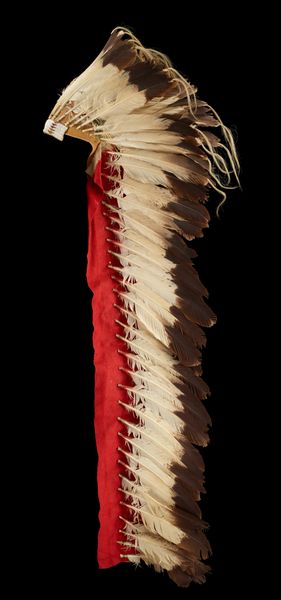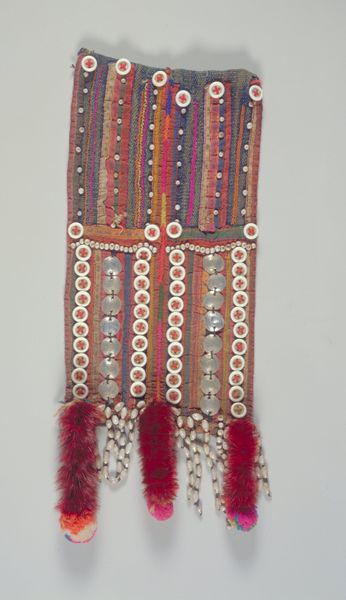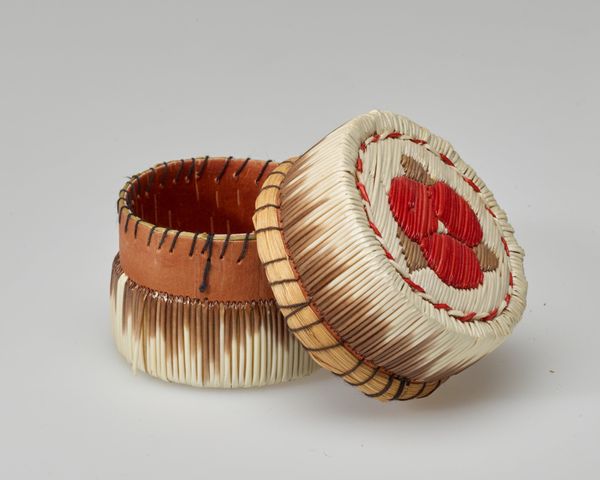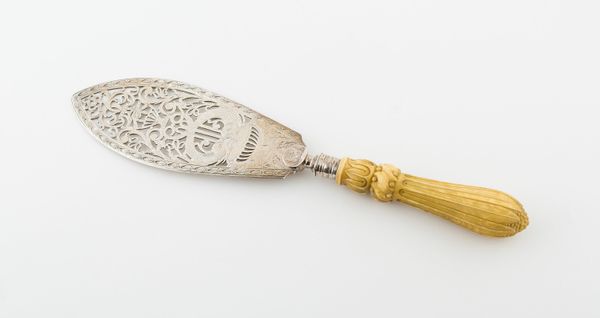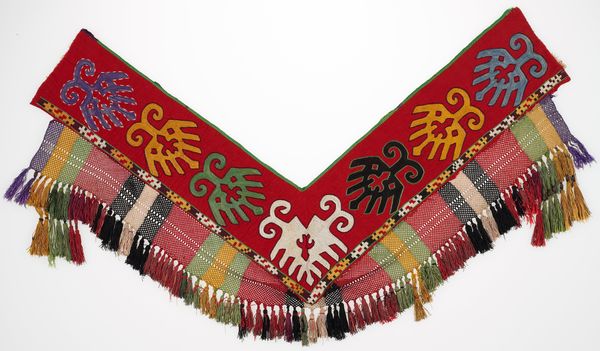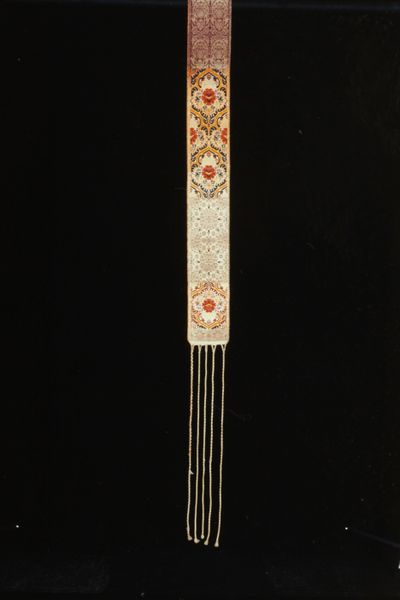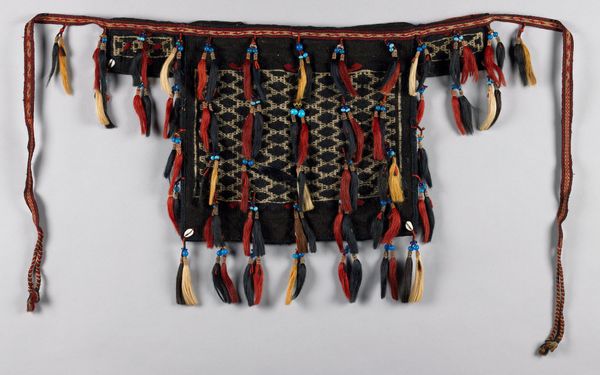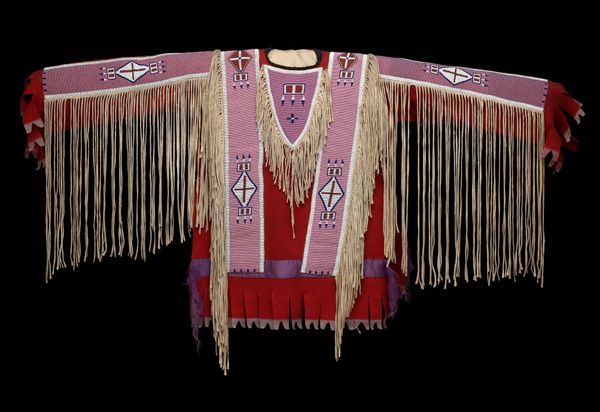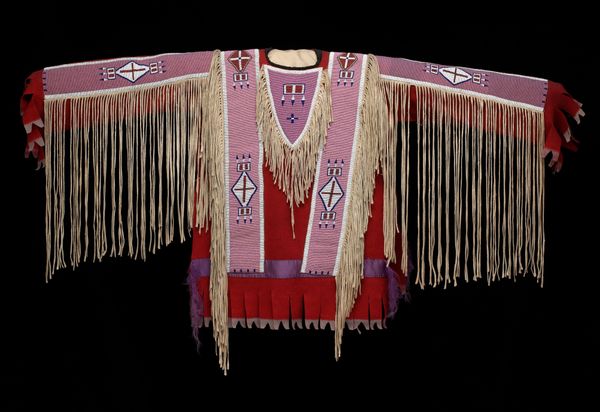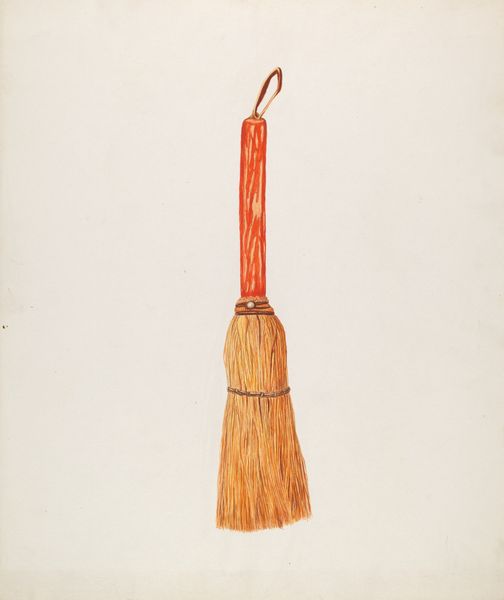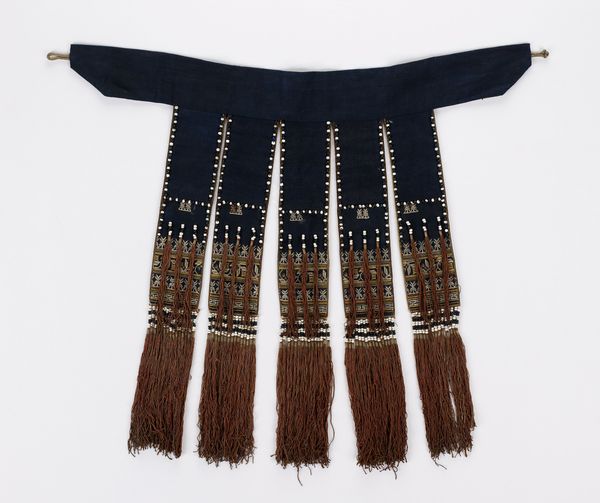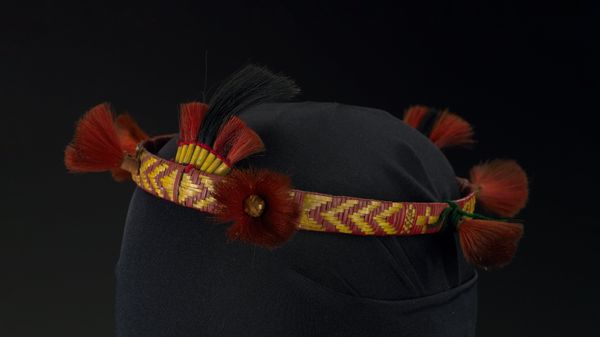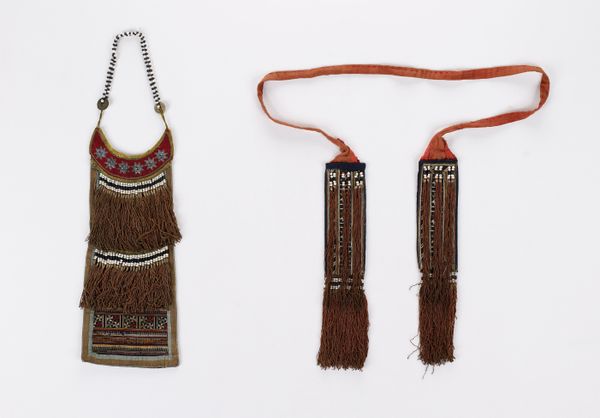
textile
#
textile
#
indigenous-americas
Dimensions: 29 7/8 × 12 1/2 × 2 in. (75.88 × 31.75 × 5.08 cm) (approx., including fringe)
Copyright: Public Domain
Editor: This is "Fan," a fibre-art piece made around 1950 by an artist from the Tsistsistas (Cheyenne) culture, now held at the Minneapolis Institute of Art. I'm immediately drawn to the intricate beadwork contrasted with the natural plumage of the feathers. How do we even begin to understand this? Curator: It's crucial to consider this piece within the complex history of the Cheyenne people and the United States. Eagle feathers, like those used here, often carry significant spiritual weight, representing courage, honor, and a connection to the divine. What impact do you think forced assimilation policies might have had on the creation and preservation of objects like this fan? Editor: I imagine it created immense tension—wanting to honor tradition, but navigating oppressive restrictions. The presence of the beads also speaks to the exchange of materials and influence... Curator: Exactly. Beadwork, while visually stunning, tells a story of trade, cultural exchange, and often, imposed dependency. Consider the ways in which indigenous art was both exploited and commodified, especially during this period. The fan becomes not just an object of beauty, but also a testament to resilience. Does that reshape your understanding of its initial impression? Editor: It completely reframes it. It is not just about "beauty," it becomes a powerful statement about maintaining cultural identity through material practice, but the tension with outside forces and cultural exchange is palpable. What does that say about modern-day indigeneity? Curator: It reminds us that indigeneity is not static. It's a living, evolving experience shaped by historical injustices, contemporary struggles, and persistent acts of cultural sovereignty. Pieces like this challenge us to engage with these complexities. It is like this fan gives us air and space to create a better path for the future. Editor: I see the importance of considering the socio-political context when interpreting art like this. Thank you. Curator: Indeed. Looking closely reveals not only artistic skill but layers of resistance, adaptation, and enduring cultural strength.
Comments
No comments
Be the first to comment and join the conversation on the ultimate creative platform.
